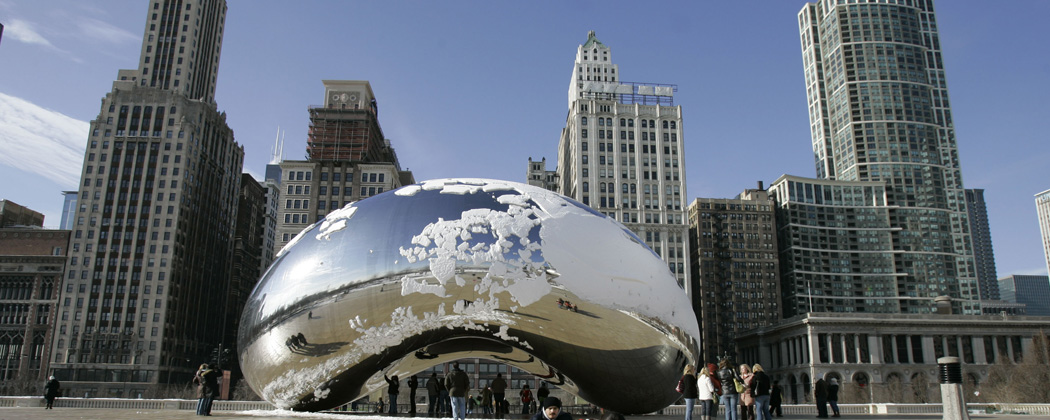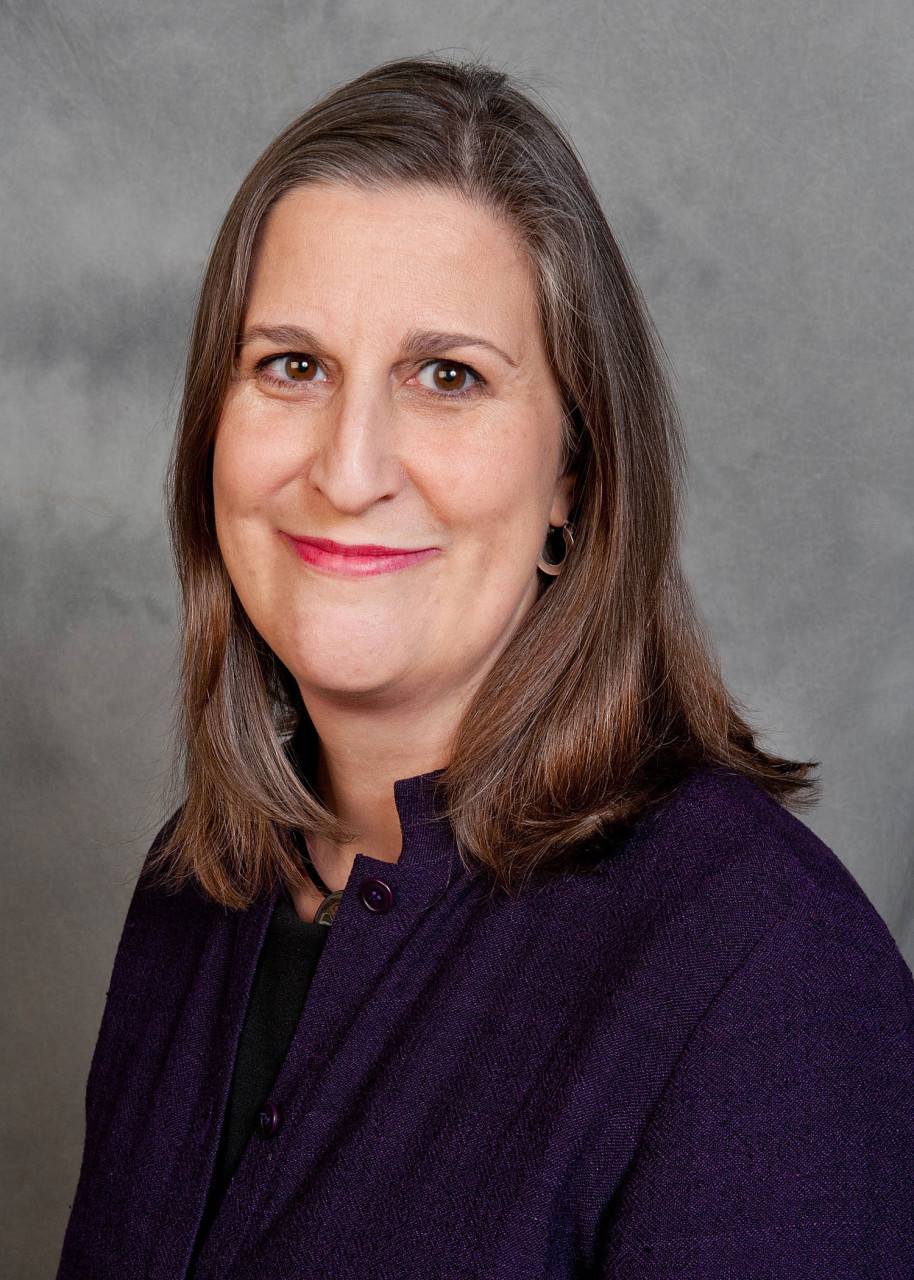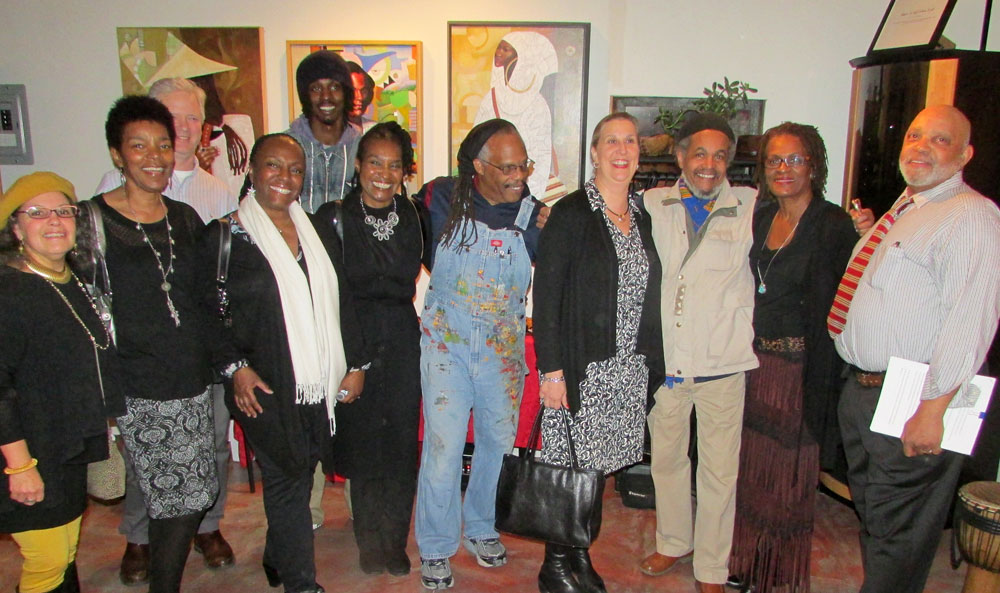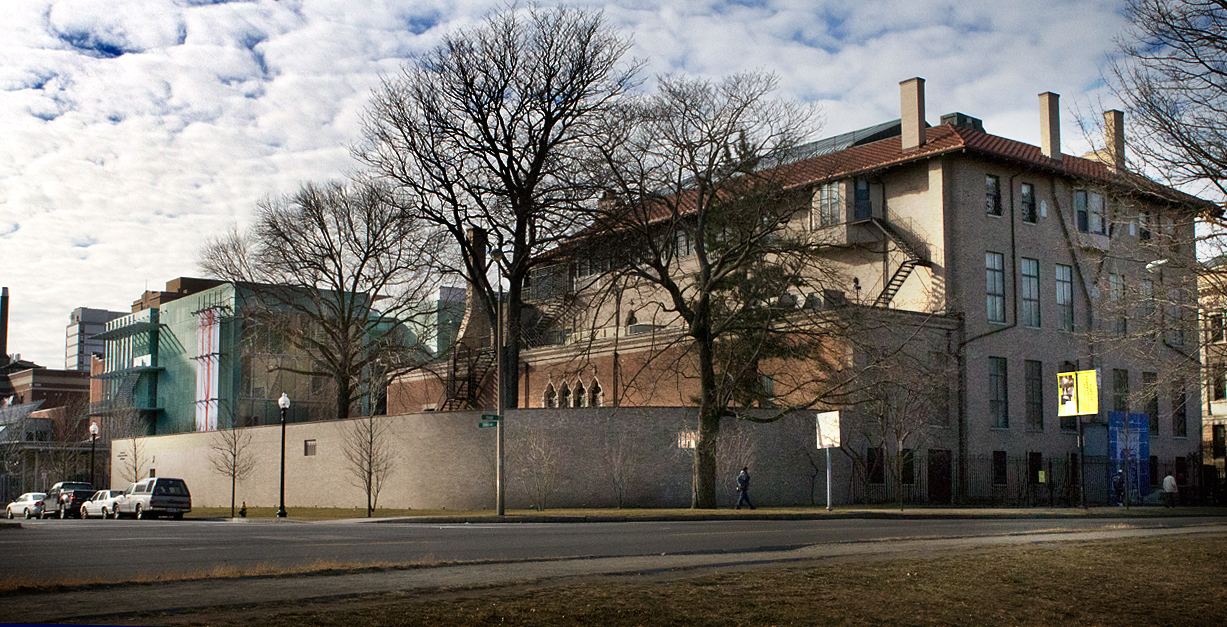Advertisement
Everyone Wants A Piece Of Boston’s New 'Arts Czar'

The city of Boston’s new chief of arts and culture has been making the rounds during her first full week on the job. Her name is Julie Burros and she hails from Chicago, a city famous for embracing and supporting the arts (like "Cloud Gate" in the above photo).
Burros quickly earned the nickname “arts czar” after Boston Mayor Marty Walsh fulfilled his campaign promise by appointing her to the newly created cabinet-level position this past September.
Now that she's here, Boston artists from all genres and cultural institutions, large and small, are clamoring for the chief's attention.
High Hopes
At the Susie Smith Gallery, in Dorchester's Four Corners neighborhood, a steady stream of African-American artists came in out of the cold for an opening last week, but the big draw was an introduction to Burros.

Boston’s first chief of arts and culture in 20 years surprised them by responding ‘yes’ to their email invitation. Now they were excitedly chatting and nibbling on a beautiful spread of food, waiting for Burros to arrive.
"I think it’s wonderful that she has the time to be able to come out to the community and see what's happening in our community," doll and jewelry artist Susie Smith, who owns the three-month-old space, said.
Painter Laurence Pierce agreed.
"I have the African Winter Gallery — it's about a seven-minute walk from here. It’s a basement gallery," he said. "We want to be put on the map. You know, we want her to know that there’s a whole cadre of very talented artists just in this immediate area."
Internationally known painter Paul Goodnight has been working in Boston for 30 years and admitted he's thrilled someone from City Hall is paying attention to their off-the-beaten-path enclave.
Advertisement
"This will be the litmus test," he said, "but I’m glad she’s doing this because I don’t know of anyone else who has done that."
Wearing denim overalls splattered with paint, Goodnight said he and his peers want the new “arts czar” to champion artists of color and include them in Boston’s cultural economy.
"Understanding that historically the black arts — our culture — has to be represented in this city, somewhere," he said.
The cameras clicked and the energy picked up when Burros walked through the door to meet the group. The 50-year-old, seasoned urban and cultural planner shook hands and commented on the work on display. One artist told her the group is made up of "O.G." artists — not for "Original Gangsters," they joke, but rather for "Old Guys."

Pierce and a few others offered prepared remarks, welcoming Burros. Then they took turns asking questions about how she can help expose their art to more people. They also want to create a mentoring program for the next generation of artists in Dorchester, Mattapan and Roxbury.
This was one of the many stops Burros will make in the coming weeks. She's in reconnaissance mode, touring Boston to connect with as many artists as she can.
"I’m a public servant, and so I work for them," she explained, "and I can only do a good job if I can really take in and understand and then reflect their needs to my colleagues in City Hall."
And it’ll be a lot for Burros to absorb because it seems like every artist in Boston wants a piece of her. Street artist Cedric Douglas of Dorchester is one of them.
“Chicago has amazing public art, it’s crazy the innovation things they’re doing there,” he said recently on Beacon Hill, when Gov. Deval Patrick signed an executive order supporting a percent-for-art program to fund public art projects in Boston and other cities around the state. “If she could bring in some of that energy — and see how different organizations can work together — if she could orchestrate that with a magic wand, that’d be awesome."
Managing Expectations
Boston Center for the Arts President Veronique Le Melle said it's not that easy.
"People are kind of saying, ‘Well, we have this 'art czar,' and she’s going to come in and save the world,’ and it’s not going to be that way," Le Melle said. "So that’s going to be a challenge, to manage people’s expectations about how long this process takes, if it’s done correctly."
Le Melle knows this from experience. Before coming to Boston she headed the state arts agency in Louisiana, pre- and post-Katrina. She was also the cultural director for the borough of Queens.
Le Melle called Burros a "true convener" who she hopes can pull together Boston's complex cultural ecosystem.
"That sounds great on paper. It’s just really hard to do," said Pat Hollenbeck, president of the Boston Musicians’ Union. "The arts groups — big and small — don’t sit down and talk to each other. The thing is it makes sense: there’s conflicting interests."
Because, Hollenbeck said, there's a limited amount of funding to go around.
A significant part of Burros’ job will be to figure out new support mechanisms to bolster the people who fuel the city’s creative economy. She said she aims to identify existing resources that can be repurposed or redirected for use by Boston’s arts community. An example she offered could be transforming unused spaces into multipurpose performance venues.
One of Hollenbeck’s biggest concerns is Boston’s lack of high-quality concert halls. He pointed to cities like Las Vegas and New York for successfully addressing that problem.
"Hopefully what she’ll be able to do is pound the pavement in search of the 21st century Andrew Carnegie who’s going to be willing to support changing us in a most profound fashion," he said. "Without this we’re really going to be a second-class arts city, sorry to say."
"Boston felt that it was a world class city in the 18th century, and so 'there’s no thing to aspire towards,' " said Anne Hawley, director of the Isabella Stewart Gardner Museum for 25 years. "And I think now people are realizing that other cities are moving ahead of us."

Like a lot of people in arts organizations big and small she's excited Walsh is making the arts a priority.
One of Burros’ main tasks will be to create a “cultural plan,” which she did in Chicago. Hawley hopes Boston’s plan will be more focused.
"Some cities have developed cultural plans that have been very potent and very powerful — others have developed plans that are so comprehensive it’s hard to set priorities in them, and I’m hoping that this planning will set a very few priorities that we can really address," she said.
There were a lot of good ideas, 243, in Chicago’s plan. That's according to Michael Dorf, who is on a stewardship committee that was created after the Chicago plan was completed in 2012.
Dorf, an attorney and longtime cultural leader, says some factions felt like the city’s plan needed to be activated and monitored more aggressively.
This month the mayor of Chicago and the public schools committed $10 million for arts education, which was a priority in the cultural plan Burros helped design.
"Julie definitely understands the field — she also really gets the political nature of a cultural plan and how important it is to make sure that it’s the people of the city who realize that they are writing the plan as well as it being written by the city government," Dorf said.
Some groundwork has already been laid. Kathy Bitetti, co-founder of the Massachusetts Artists Leaders Coalition (MALC), is an artist herself and self-described "policy-nerd." She’s been straddling art and policy on Beacon Hill for 20 years and helped create Walsh’s arts and culture platform. Bitetti was also on the committee that selected Burros.
"Her biggest challenge is having a website that doesn’t suck," Bitetti said.
Because Bitetti says artists should be able to rely on the city of Boston's website to find information about things like permitting and health care.
Gary Steuer, former chief cultural officer for the city of Philadelphia, agrees.
"It’s great to do big picture things and cultural plans and all that, great, but there is also a huge value to being the go-to place within city government for the arts and for artists," Steuer said.
To that end Burros shared her email address with the 600 people from Boston’s arts community who attended a big welcome event at the Paramount Theatre last week. She's well aware that she has her work cut out for her.
"Right now I’m just super-duper caffeinated and charged up so, occasionally I’m like, 'Oh my God, what did I get myself into?' You know?" she laughed.
But luckily Burros says those moments have been fleeting.
